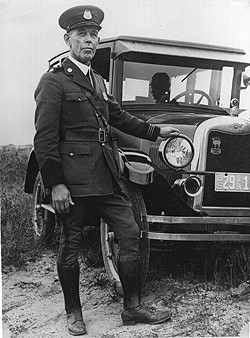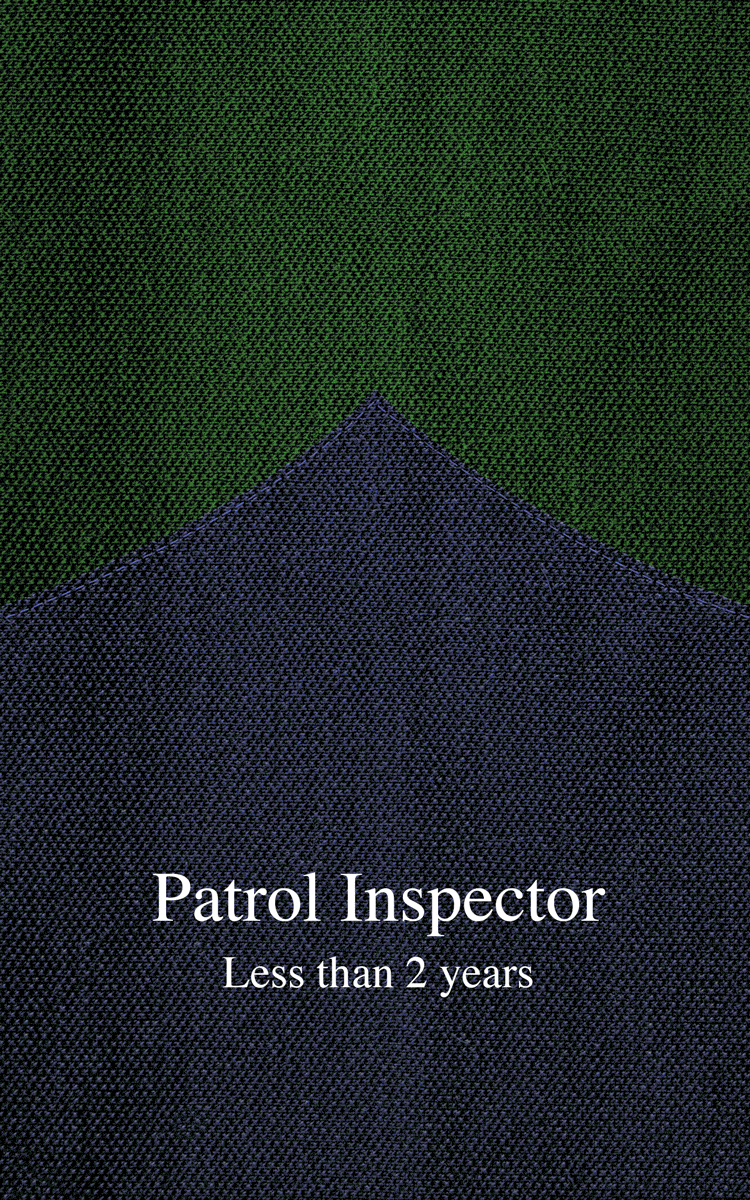It is important to know the Immigration Service hierarchy of the 1920's to understand the early rank insignia of the Border Patrol. The Border Patrol was created in 1924 under the Department of Labor, becoming part of the Bureau of Immigration. The Bureau was led by the Commissioner-General. Under the Bureau was the Immigration Service. The Immigration Service divided the United States into 35 immigration districts. Each district was led by a District Director or a Commissioner of Immigration. If a district had more personnel or a greater workload, then its leader would receive greater compensation and be given the title of Commissioner of Immigration. Most districts were divided into three to five sub-districts. In 1924, eleven districts and their 32 sub-districts were located along the international boundaries with Canada and Mexico and received new Border Patrol employees. Throughout the decades, the sub-districts would evolve to become the modern day U.S. Border Patrol (USBP) Sectors. Therefore, the USBP began not with two but with 32 "Sectors."

On December 11, 1924, the Department of Labor and the Bureau of Immigration approved the Border Patrol's first uniform policy, General Order 42, Uniforms Border Patrol. At the time, the Border Patrol had only two positions: Border Patrol Inspectors and Immigrant Inspectors who were designated as Patrol Inspectors In Charge (PIIC). PIICs supervised the Border Patrol personnel within the subdistricts. PIICs would be considered Chief Patrol Agents today. Neither position is known to have had rank insignia.
General Order 42 was a very short document and was modified with at least 10 amendments. Amendments six through ten have been located. The sixth supplement to General Order 42, dated April 4, 1928, contains the earliest Border Patrol rank and time-in-service insignia that have been located. Furthermore, based on a report written by Supervisor of the Border Patrol Ruel Davenport, the USBP had no rank insignia as of October 1927. Therefore, it is reasonable to conclude that pictures containing rank insignia before the sixth supplement to General Order 42 were unofficial, local insignia. This is the case with an early picture of Frank M. McMahan, who was first PIIC of the Escondido Sub-district in 1924 and later became the Chief Patrol Inspector of the San Diego Sub-district in 1926.
On March 18, 1926, General Order 61 was signed and came into effect on April 1, 1926. General Order 61 restructured the Border Patrol, creating three additional positions and renaming one:
- Created the position Senior Patrol Inspector,
- Created the position of Assistant Superintendent,
- This position would supervise all Border Patrol employees within a district and report to the district head,
- Created the position of Supervisor, Border Patrol,
- It is this position that we consider to be the Chief, U.S. Border Patrol today,
- Immigrant Inspectors who had been designated as Patrol Inspectors In Charge were renamed to Chief Patrol Inspectors.
Sixth Supplement to General Order 42
Description of Insignia of Rank on Blouse
(Equivalent to today's Ike Jacket)
Senior Patrol Inspector - One strip of silver bullion or silver braid 3-inches long by 3/8-inch wide, worn on the blue facing of each sleeve of the uniform blouse. The insignia was placed so that the ends extended to the edges of the blue facing to form an approximation of an equilateral triangle with the point of the facing as the apex and the silver braid as the base.
Chief Patrol Inspector - One strip of gold bullion or gold braid on the blue facing of each sleeve. This insignia was the same size and placement as the Senior Patrol Inspectors' insignias.
Assistant Superintendent - Two strips of gold bullion or gold braid on the blue facing of each sleeve and the same size as the Chief Patrol Inspector insignia. The first strip was placed as indicated above and the second was placed 3/8-inch below and parallel with it.
Sixth Supplement to General Order 42
Description of Insignia of Rank on Uniform Overcoats
(Equivalent to today's Dress Overcoat)
Senior Patrol Inspector - One strip of 3/16-inch black tubular mohair braid, placed ½-inch above and following the contour of the blue cuff facing on the outer sleeve and forming a. single loop above the point of facing, outside dimensions of the loop to be 3-inches tall and 1-7/8 inches at the widest point.
Chief Patrol Inspector - Two strips of the above-described braid, the second was placed ¼ inch above and following the first so as to form a second loop inside of the first.
Assistant Superintendent - Three strips of the above-described braid, the third to be placed ¼ inch above and following the second so as to form a third loop inside of second. The edges of braid to be let into sleeve seams.
Sixth Supplement to General Order 42
Description of Time-in-Service Insignia
Two Years' Service - One bar of bullion or braid 1-inch tall and ¼ inch wide was placed horizontally on the left blouse sleeve and centered ½-inch above the point of the blue cuff facing.
Four Years' Service - Two bars of bullion or braid 1-inch long and ¼-inch wide with the second bar placed ¼-inch below and parallel with the first.
Five Years' Service - The bars were removed, one 5-point bullion star was substituted that measured ½-inch from point-to-point and centered 1-½-inches above the point of blue trimming on the left blouse sleeve.
Additional service was indicated as outlined above until 10 years' service was attained. At that point, the bars were removed and another star added and so on. Stars were centered and placed horizontally, ½-inch apart.
Service insignia represented only actual service in the Border Patrol. Service insignia for Chief Patrol Inspectors and higher grades were gold. Service insignia for Senior Patrol Inspectors and lower grades were silver.

On September 10, 1931, the Border Patrol’s second uniform policy was approved, General Order 179, Uniforms – Border Patrol. General Order 179 incorporated the amendments and supplements to General Order 42. Currently, only three amendments to General Order 179 are known to exist.


